Abstract
The metabolism of glucose during enterotoxin B synthesis in Staphylococcus aureus S-6 was examined under anaerobic conditions in the presence and absence of nitrate. The repression of enterotoxin synthesis which occurs during the oxidative metabolism of glucose was relieved after a shift to anaerobic conditions; glucose was then converted primarily to lactic acid and was metabolized more rapidly, presumably to obtain the equivalent amount of energy available aerobically. A greater proportion of oxidized end products and evidently more energy per glucose molecule was produced in the presence of oxygen. Thus, available energy as judged by a change in the type and proportion of end products appears to be related to the degree of toxin repression. As expected, the addition of nitrate during anaerobic glucose metabolism prevented derepression of toxin synthesis.
Full text
PDF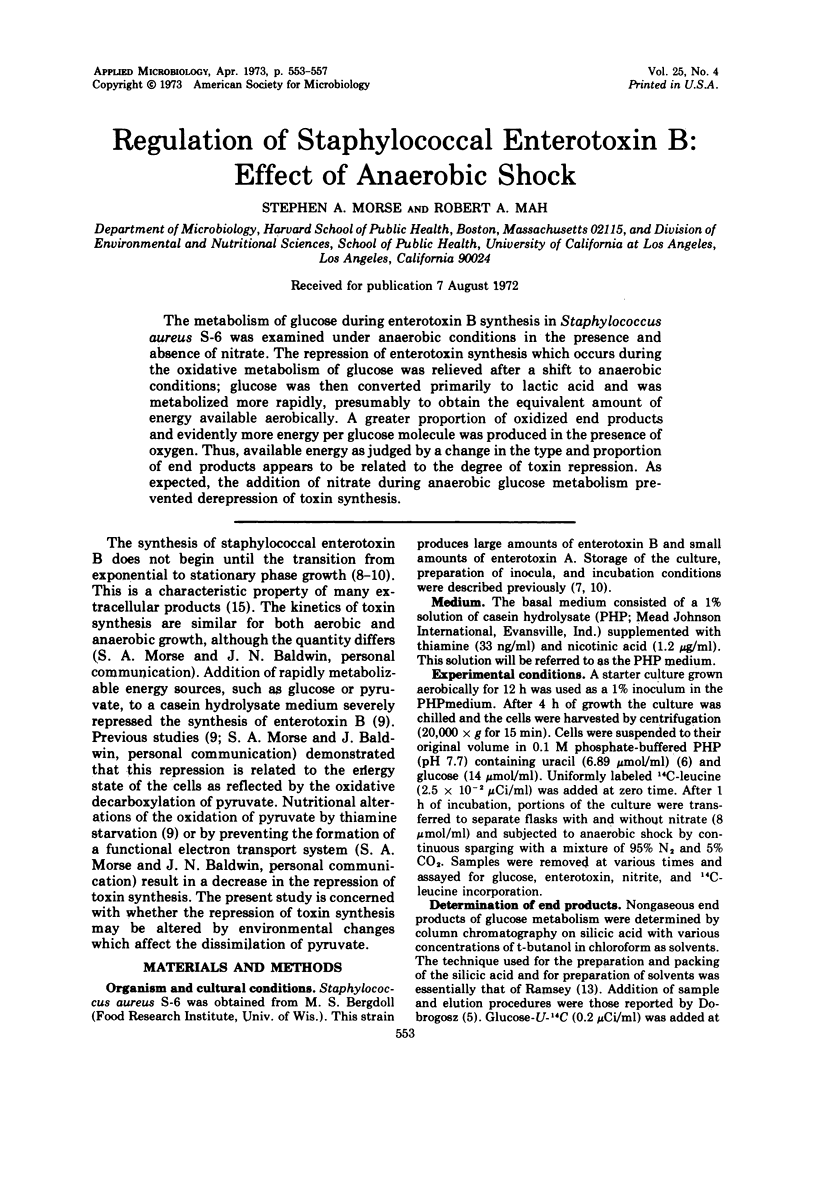
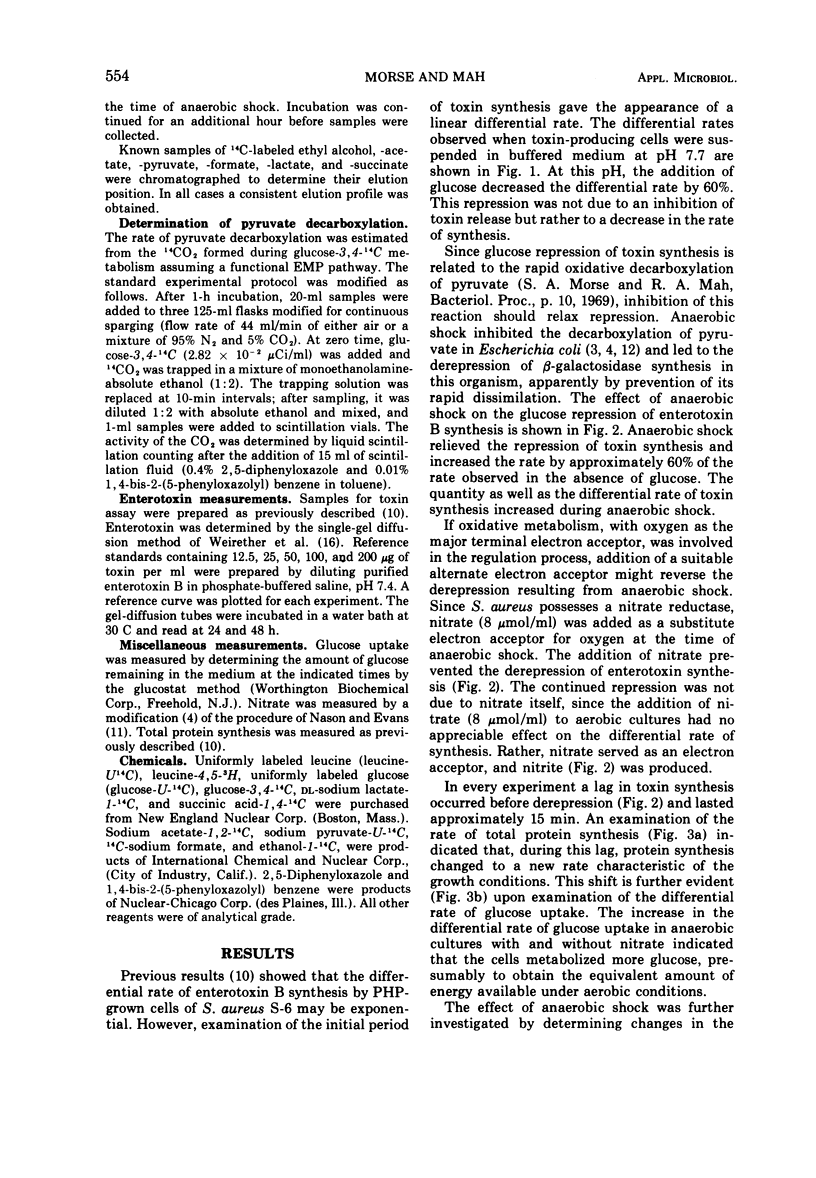
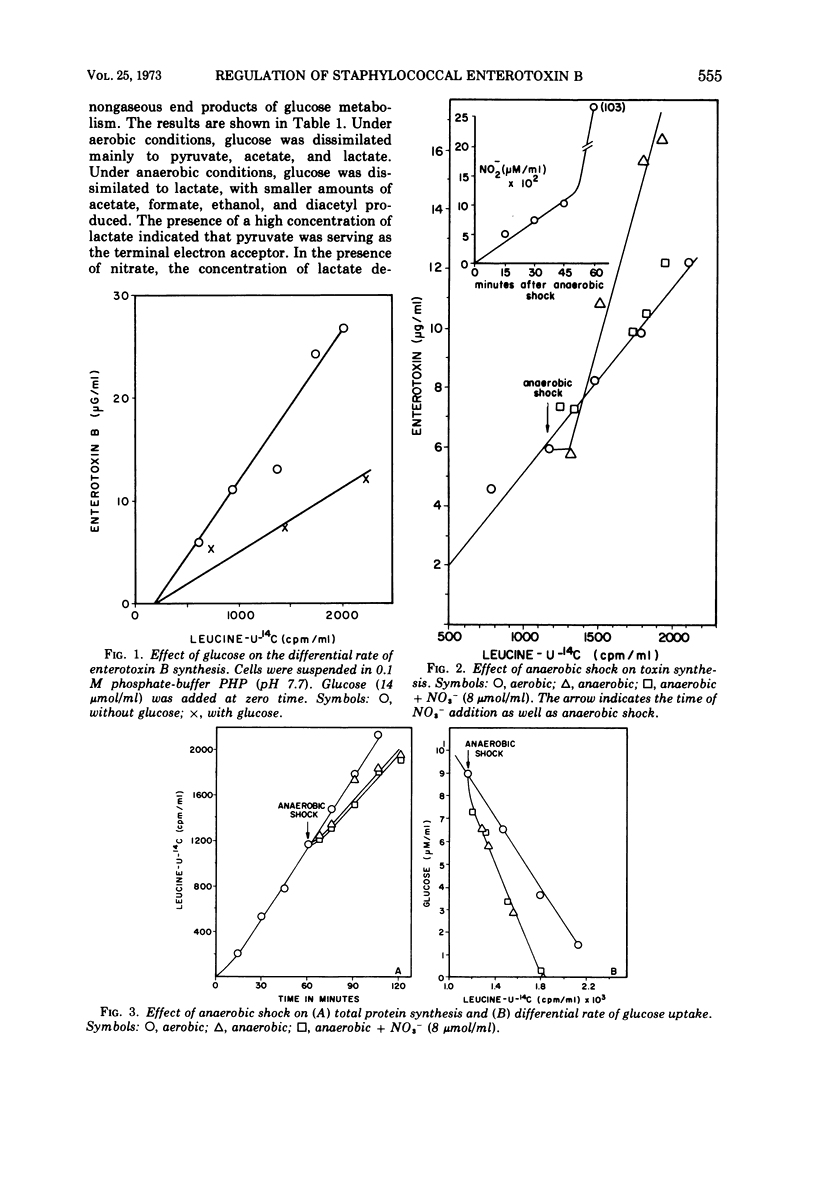
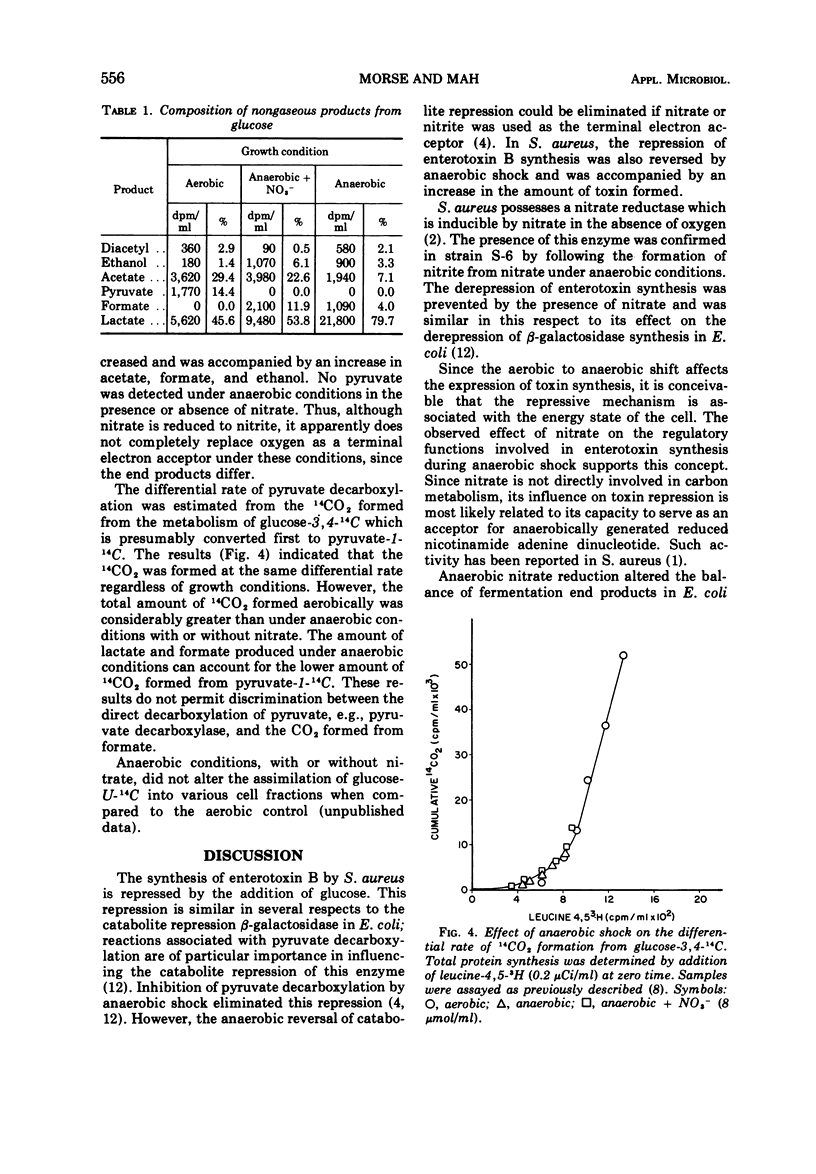
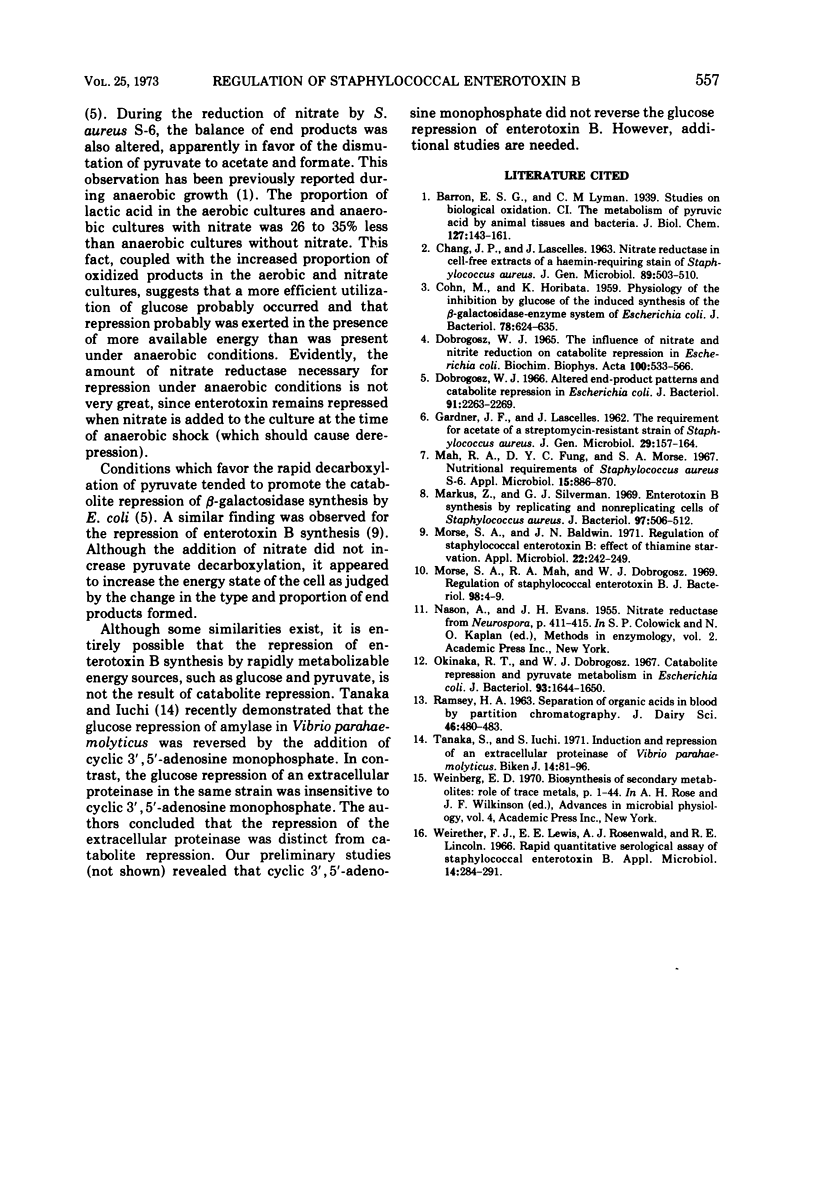
Selected References
These references are in PubMed. This may not be the complete list of references from this article.
- CHANG J. P., LASCELLES J. NITRATE REDUCTASE IN CELL-FREE EXTRACTS OF A HAEMIN-REQUIRING STRAIN OF STAPHYLOCOCCUS AUREUS. Biochem J. 1963 Dec;89:503–510. doi: 10.1042/bj0890503. [DOI] [PMC free article] [PubMed] [Google Scholar]
- COHN M., HORIBATA K. Physiology of the inhibition by glucose of the induced synthesis of the beta-galactosideenzyme system of Escherichia coli. J Bacteriol. 1959 Nov;78:624–635. doi: 10.1128/jb.78.5.624-635.1959. [DOI] [PMC free article] [PubMed] [Google Scholar]
- DOBROGOSZ W. J. THE INFLUENCE OF NITRATE AND NITRITE REDUCTION ON CATABOLITE REPRESSION IN ESCHERICHIA COLI. Biochim Biophys Acta. 1965 May 4;100:553–566. doi: 10.1016/0304-4165(65)90025-5. [DOI] [PubMed] [Google Scholar]
- Dobrogosz W. J. Altered end-product patterns and catabolite repression in Escherichia coli. J Bacteriol. 1966 Jun;91(6):2263–2269. doi: 10.1128/jb.91.6.2263-2269.1966. [DOI] [PMC free article] [PubMed] [Google Scholar]
- GARDNER J. F., LASCELLES J. The requirement for acetate of a streptomycin-resistant strain of Staphylococcus aureus. J Gen Microbiol. 1962 Sep;29:157–164. doi: 10.1099/00221287-29-1-157. [DOI] [PubMed] [Google Scholar]
- Mah R. A., Fung D. Y., Morse S. A. Nutritional requirements of Staphylococcus aureus S-6. Appl Microbiol. 1967 Jul;15(4):866–870. doi: 10.1128/am.15.4.866-870.1967. [DOI] [PMC free article] [PubMed] [Google Scholar]
- Markus Z., Silverman G. J. Enterotoxin B synthesis by replicating and nonreplicating cells of Staphylococcus aureus. J Bacteriol. 1969 Feb;97(2):506–512. doi: 10.1128/jb.97.2.506-512.1969. [DOI] [PMC free article] [PubMed] [Google Scholar]
- Morse S. A., Baldwin J. N. Regulation of staphylococcal enterotoxin B: effect of thiamine starvation. Appl Microbiol. 1971 Aug;22(2):242–249. doi: 10.1128/am.22.2.242-249.1971. [DOI] [PMC free article] [PubMed] [Google Scholar]
- Morse S. A., Mah R. A., Dobrogosz W. J. Regulation of staphylococcal enterotoxin B. J Bacteriol. 1969 Apr;98(1):4–9. doi: 10.1128/jb.98.1.4-9.1969. [DOI] [PMC free article] [PubMed] [Google Scholar]
- Okinaka R. T., Dobrogosz W. J. Catabolite repression and pyruvate metabolism in Escherichia coli. J Bacteriol. 1967 May;93(5):1644–1650. doi: 10.1128/jb.93.5.1644-1650.1967. [DOI] [PMC free article] [PubMed] [Google Scholar]
- Tanaka S., Iuchi S. Induction and repression of an extracellular proteinase in Vibrio parahaemolyticus. Biken J. 1971 Jun;14(2):81–96. [PubMed] [Google Scholar]
- Weirether F. J., Lewis E. E., Rosenwald A. J., Lincoln R. E. Rapid quantitative serological assay of staphylococcal enterotoxin B. Appl Microbiol. 1966 Mar;14(2):284–291. doi: 10.1128/am.14.2.284-291.1966. [DOI] [PMC free article] [PubMed] [Google Scholar]


